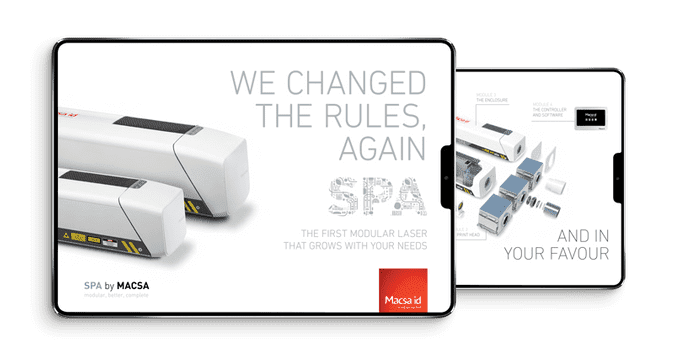Security product marking
Tempered glass is a safety glass that, through thermal and chemical processes, increases its resistance up to 4 to 5 times more than normal glass. The tempering process puts the exterior surfaces into compression and the inner ones into tension. This way, if the glass breaks, it crumbles into small pieces instead of sharp splinters to prevent possible injuries.
This type of glass is often used in the construction industry, as well as in oven doors and windows that are out in the open, applications that experience large contrasts in temperature without breaking. Marking on tempered glass must be equally resistant and readable due to the severe conditions it undergoes, to guarantee the traceability of the product in the event of an incident and comply with regulations in place.
With the SPA CB10 by Macsa ID, we achieve a resistant marking, with high contrast and definition, making any datamatrix or barcodes easy to read with any code reader. The CO2 laser makes a shallow and fast marking that does not damage or crack the material, but instead provides a clean and frost-free marking.
Technical information
- Laser: Macsa SPA CB 10 PLUS
- Lens: 100 x 100
- Industry: Building materials
- Application type: Marking
- Product: Various glass finishes
- Material: Tempered glass
- Marking type: Static
- Marking time: 9 sec.
For more information about marking on tempered glass, please contact us to macsa@macsa.com or call us to +34 93 873 87 98


